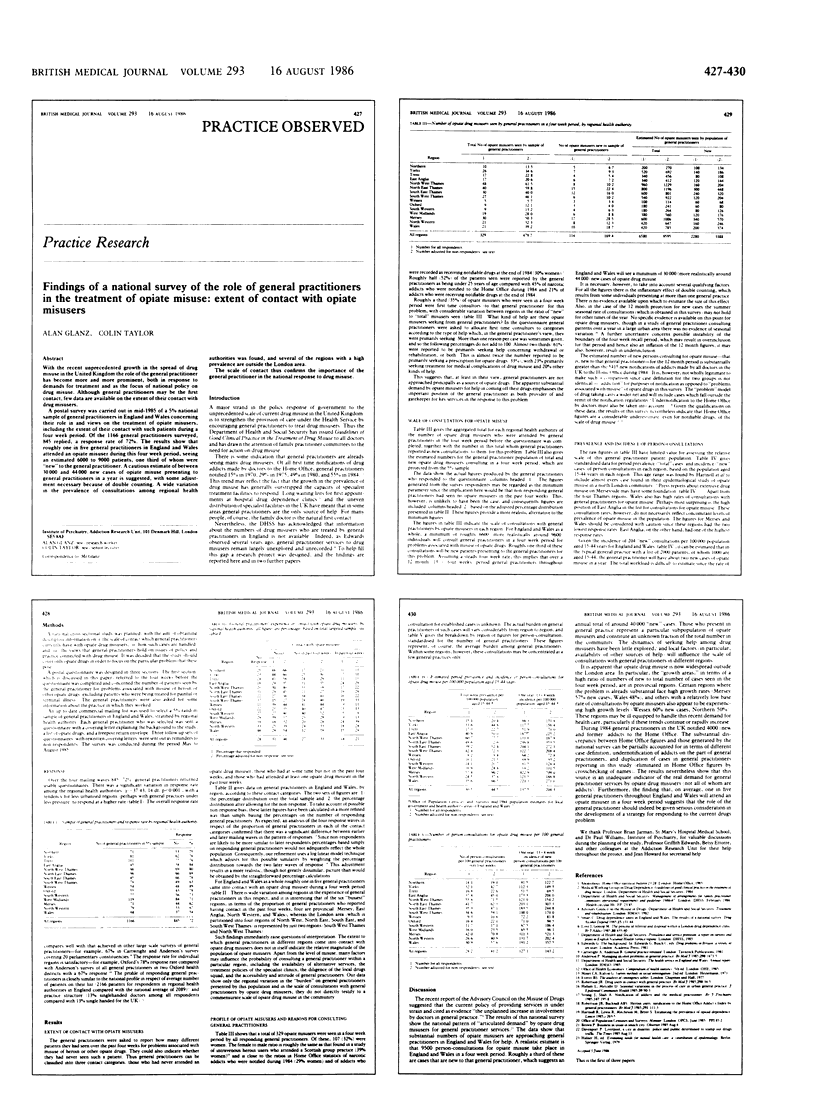Abstract
With the recent unprecedented growth in the spread of drug misuse in the United Kingdom the role of the general practitioner has become more and more prominent, both in response to demands for treatment and as the focus of national policy on drug misuse. Although general practitioners may be the first contact, few data are available on the extent of their contact with drug misusers. A postal survey was carried out in mid-1985 of a 5% national sample of general practitioners in England and Wales concerning their role in and views on the treatment of opiate misusers, including the extent of their contact with such patients during a four week period. Of the 1166 general practitioners surveyed, 845 replied, a response rate of 72%. The results show that roughly one in five general practitioners in England and Wales attended an opiate misuser during this four week period, seeing an estimated 6000 to 9000 patients, one third of whom were "new" to the general practitioner. A cautious estimate of between 30,000 and 44,000 new cases of opiate misuse presenting to general practitioners in a year is suggested, with some adjustment necessary because of double counting. A wide variation in the prevalence of consultations among regional health authorities was found, and several of the regions with a high prevalence are outside the London area. The scale of contact thus confirms the importance of the general practitioner in the national response to drug misuse.
Full text
PDFPage 427-430



